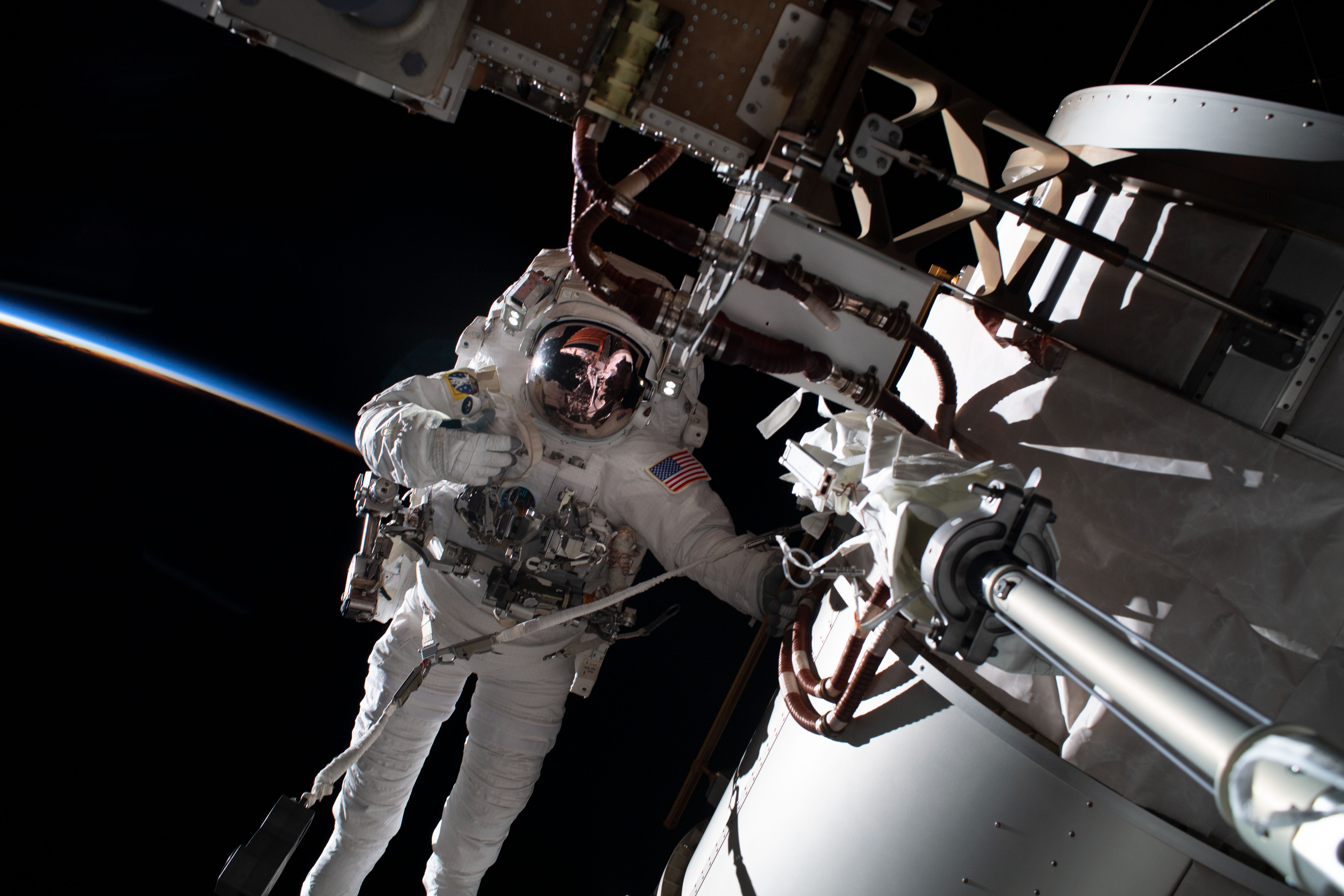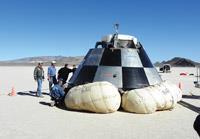The next step towards a commercial crew capability.
Link....
Link....
A COMMERCIAL CREW INTEGRATED CAPABILITY
Solicitation Number: NASA-CCiCap
Agency: National Aeronautics and Space Administration
Office: Kennedy Space Center
Location: Office of Procurement
Solicitation Number: NASA-CCiCap
Notice Type: Pre-solicitation
Synopsis: Added: Jan 23, 2012 10:01 am
The following information is preliminary and subject to change.In 2009, NASA began commercial crew initiatives to stimulate the private sector to develop and demonstrate human spaceflight capabilities that could ultimately lead to the availability of commercial human spaceflight services for both commercial and Government customers. Those initiatives focused on maturing designs of elements of a crew transportation system (CTS). NASA intends to begin a new initiative, the Commercial Crew integrated Capability(CCiCap), to facilitate industry's development of an integrated CTS. This activity is expected to result in significant maturation of commercial CTS. Facilitating development of this U.S. capability is expected to provide national economic benefit and support safe, reliable, and cost effective transportation to Low-Earth Orbit (LEO).
NASA intends to solicit proposals from U.S. space industry participants to mature thedesign and development of an integrated CTS which includes spacecraft, launch vehicle,ground and mission systems. Selected CCiCap participants will receive funded Space Act Agreements (SAA's) under NASA's Other Transactions Authority within the National Aeronautics and Space Act, 51 U.S.C. 20113. NASA intends to select a portfolio of multiple CCiCap SAA's that best meet the CCiCap goals within the available funding.An Announcement soliciting proposals is currently planned to be released on or about February 7, 2012, with proposals due approximately 45 days later. The award of multiple SAAs is planned for July / August 2012 with a base period through the end of May 2014. NASA does not intend to issue a draft of the Announcement but does plan to conduct a pre-proposal conference within two weeks after release of the Announcement to discuss the CCiCap activity and answer questions. NASA will only consider proposals from U.S. commercial providers as defined by the Commercial Space Act of 1998.
All questions, comments or other correspondence shall be submitted to the Agreement Officer at KSC-CCiCap@mail.nasa.gov.Please indicate your interest in this Announcement by January 30, 2012, by submitting the information below to KSC-CCiCap@mail.nasa.gov. Your non-binding letter of intent should include the company name, point of contact, address, phone number, e-mail, and nature of interest as either a primary participant or team member. Potential respondents are responsible for monitoring the Internet site below for the release of the Announcement and for downloading their own copy of the Announcement and any amendments.
The Internet site, or URL, for the Kennedy Space Center Business Opportunities page is: http://prod.nais.nasa.gov/cgi-bin/ep...gi?gr=D&pin=76 An Ombudsman will be appointed See NASA Specific Note B.This is not a solicitation for proposals and NASA does not intend to respond to questions about this synopsis at this time. As necessary, further information will be provided as amendments to this synopsis.
Contracting Office Address: NASA/John F. Kennedy Space Center, Procurement, Kennedy Space Center, FL 32899
Point of Contact(s): C. David Shreve, Contracting Officer, Phone 321-867-3456, Fax 321-867-1166, Email david.shreve@nasa.gov - Rogelio Curiel, Contracting Officer, Phone 321-867-7498, Fax 321-867-3859,
Email rogelio.curiel@nasa.gov
Solicitation Number: NASA-CCiCap
Agency: National Aeronautics and Space Administration
Office: Kennedy Space Center
Location: Office of Procurement
Solicitation Number: NASA-CCiCap
Notice Type: Pre-solicitation
Synopsis: Added: Jan 23, 2012 10:01 am
The following information is preliminary and subject to change.In 2009, NASA began commercial crew initiatives to stimulate the private sector to develop and demonstrate human spaceflight capabilities that could ultimately lead to the availability of commercial human spaceflight services for both commercial and Government customers. Those initiatives focused on maturing designs of elements of a crew transportation system (CTS). NASA intends to begin a new initiative, the Commercial Crew integrated Capability(CCiCap), to facilitate industry's development of an integrated CTS. This activity is expected to result in significant maturation of commercial CTS. Facilitating development of this U.S. capability is expected to provide national economic benefit and support safe, reliable, and cost effective transportation to Low-Earth Orbit (LEO).
NASA intends to solicit proposals from U.S. space industry participants to mature thedesign and development of an integrated CTS which includes spacecraft, launch vehicle,ground and mission systems. Selected CCiCap participants will receive funded Space Act Agreements (SAA's) under NASA's Other Transactions Authority within the National Aeronautics and Space Act, 51 U.S.C. 20113. NASA intends to select a portfolio of multiple CCiCap SAA's that best meet the CCiCap goals within the available funding.An Announcement soliciting proposals is currently planned to be released on or about February 7, 2012, with proposals due approximately 45 days later. The award of multiple SAAs is planned for July / August 2012 with a base period through the end of May 2014. NASA does not intend to issue a draft of the Announcement but does plan to conduct a pre-proposal conference within two weeks after release of the Announcement to discuss the CCiCap activity and answer questions. NASA will only consider proposals from U.S. commercial providers as defined by the Commercial Space Act of 1998.
All questions, comments or other correspondence shall be submitted to the Agreement Officer at KSC-CCiCap@mail.nasa.gov.Please indicate your interest in this Announcement by January 30, 2012, by submitting the information below to KSC-CCiCap@mail.nasa.gov. Your non-binding letter of intent should include the company name, point of contact, address, phone number, e-mail, and nature of interest as either a primary participant or team member. Potential respondents are responsible for monitoring the Internet site below for the release of the Announcement and for downloading their own copy of the Announcement and any amendments.
The Internet site, or URL, for the Kennedy Space Center Business Opportunities page is: http://prod.nais.nasa.gov/cgi-bin/ep...gi?gr=D&pin=76 An Ombudsman will be appointed See NASA Specific Note B.This is not a solicitation for proposals and NASA does not intend to respond to questions about this synopsis at this time. As necessary, further information will be provided as amendments to this synopsis.
Contracting Office Address: NASA/John F. Kennedy Space Center, Procurement, Kennedy Space Center, FL 32899
Point of Contact(s): C. David Shreve, Contracting Officer, Phone 321-867-3456, Fax 321-867-1166, Email david.shreve@nasa.gov - Rogelio Curiel, Contracting Officer, Phone 321-867-7498, Fax 321-867-3859,
Email rogelio.curiel@nasa.gov






Comment